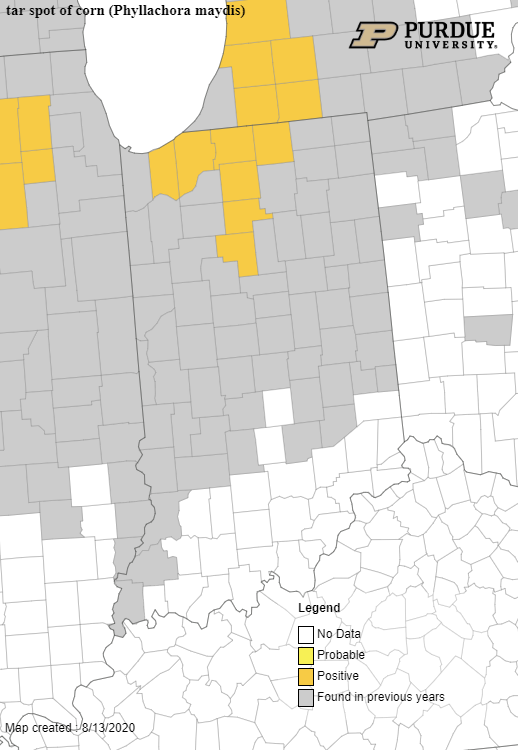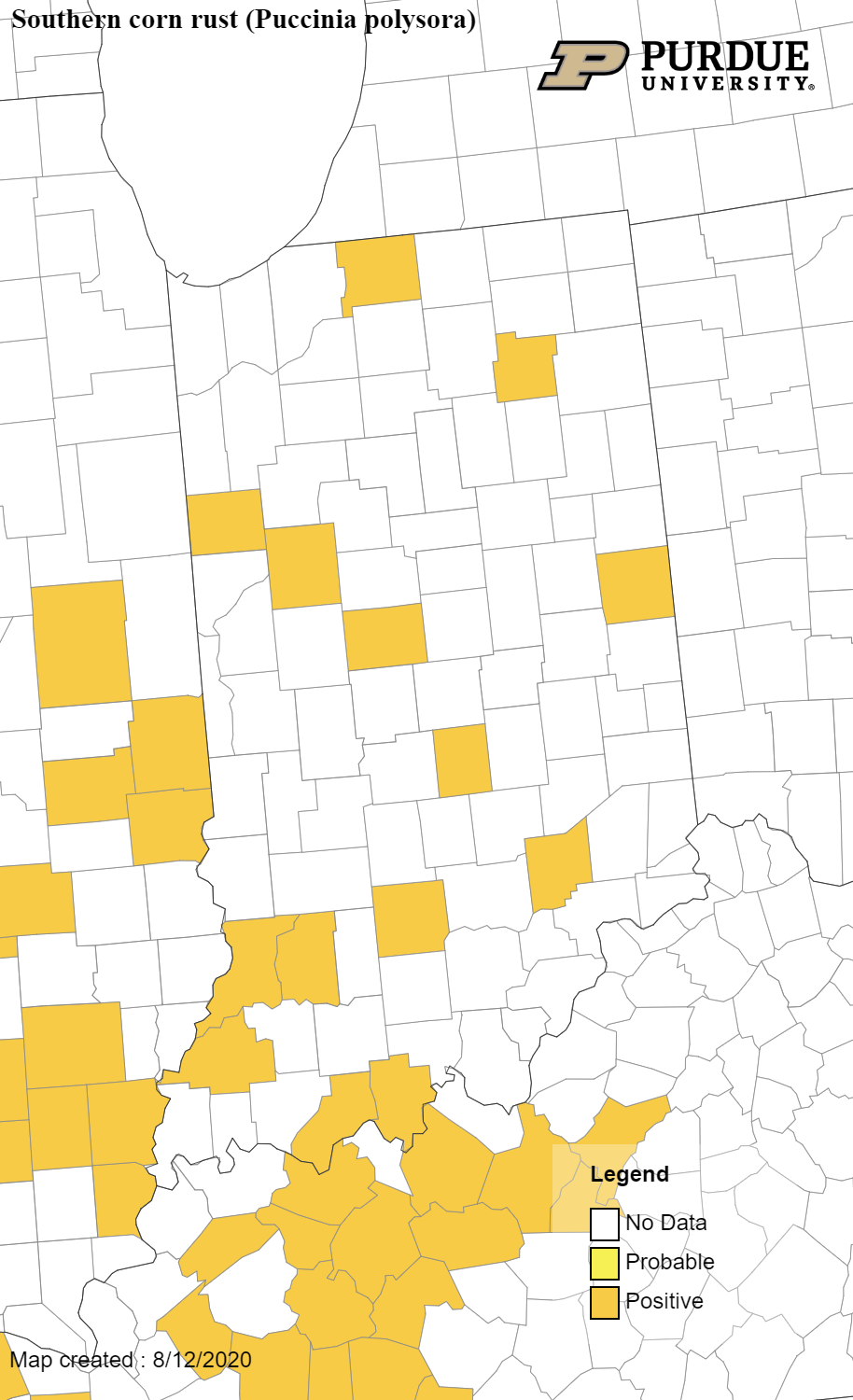Soybeans
We are starting to see a few diseases in soybean across Indiana. Foliar symptoms of sudden death syndrome and brown stem rot are also making an appearance, make sure you cut open the stem to verify. As a reminder, brown stem rot will cause a discoloration of the pith, while sudden death syndrome causes a discoloration of the vascular tissue (Fig. 1). In addition, we continue to see frogeye leaf spot and Septoria brown spot – the levels of both of these diseases were very low and our soybean are about R4 (full pod) to R5 (beginning seed). I suspect that if we continue to receive intermittent rain, we might start to see a bit more disease in soybean.

Figure 1. Discoloration of pith by brown stem rot, discoloration of vascular tissue by sudden death syndrome (SDS) verses a healthy stem, and foliar symptoms of either SDS or brown stem rot.
Corn
Tar Spot – We have confirmed seven counties with active tar spot as of August 12 for the 2020 season. These counties all had a previous history: Porter, LaPorte, St. Joseph, Elkhart, Marshall, Fulton, and Cass (Figure 2). Gray colored counties on the map are those we have found tar spot in previous years. In northern Indiana, we are starting to find multiple fields with tar spot beginning to move up in the canopy. I have scouted fields that have 100% of the plants infected with stroma (black spots) ranging from a few on a leaf to 5% severity. The sites where we are seeing the highest severity were those that had a significant history of tar spot and have had recent rain or irrigation. That being said, please keep a close eye on your fields. A well-timed fungicide application up to R3 will help reduced disease and protect yield.
Southern Corn Rust – We have added seven new counties this week to the southern rust map in Indiana since my last report. As a reminder, it is confirmed now in 14 counties in Indiana (figure 3). These include Gibson, Knox, Spencer, Perry, Lawrence, Jennings, Johnson, Boone, Benton, Tippecanoe, Randolph, Whitley, and St. Joseph. Keep scouting and if you suspect it, please send a sample to the Purdue Plant Pest Diagnostic Lab (PPDL). Southern rust can cause significant yield loss if it builds up to high levels during silking and corn fill. Therefore, it is very important to keep a close eye out for this disease this season to make timely management decisions.

Figure 2. Map of counties confirmed for active tar spot in Indiana as of August 13, 2020. Gray counties are those that we have found tar spot in previous years.
Southern Corn Rust – We have added seven new counties this week to the southern rust map in Indiana since my last report. As a reminder, it is confirmed now in 14 counties in Indiana (figure 3). These include Gibson, Knox, Spencer, Perry, Lawrence, Jennings, Johnson, Boone, Benton, Tippecanoe, Randolph, Whitley, and St. Joseph. Keep scouting and if you suspect it, please send a sample to the Purdue Plant Pest Diagnostic Lab (PPDL). Southern rust can cause significant yield loss if it builds up to high levels during silking and corn fill. Therefore, it is very important to keep a close eye out for this disease this season to make timely management decisions.
We again are requesting if you have any suspect locations to please update us and send a sample for both tar spot and southern corn rust. I am especially interested in those counties we have yet to scout or receive a sample. Even if your county is yellow, I am also interested in learning if you have tar spot on your farm and what you might be seeing – feel free to send me an email/photo at dtelenko@purdue.edu or call 765- 496-5168.



